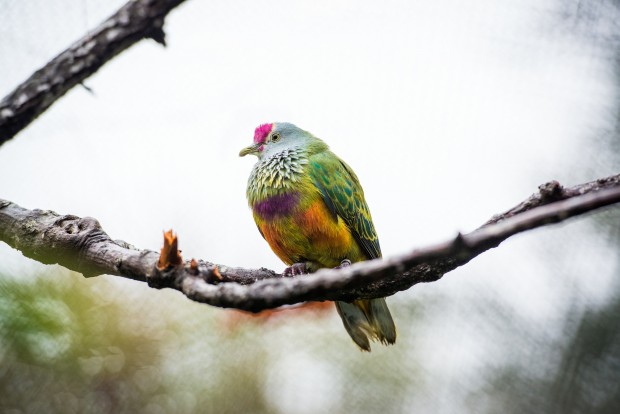Houston Zoo Staff Saving Wildlife in the Mariana Islands (Part III)!
This blog was written by Steve Howard, a member of the Zoo’s Bird Department. Steve Howard received a Staff Conservation Fund grant from his coworkers at the Houston Zoo to carry out a wildlife-saving project for birds in the Mariana Islands (a chain of islands in the western North Pacific Ocean). We will be posting a series of blogs as Steve documents his work overseas.
Friday April 22, 2016
Hello again from Tinian! This was a looong, hot day, but we wound up with 21 mist nets set up! The spots for the nets are cleared using saws, machetes and muscle, and are linked by trails cut the same way. Some are easy, some require some branches to be removed to make way. We cut as little as possible, so our impact on the forest is minimal, but it’s still a lot of work! I’ve included a picture of a cleared trail, and a net all set up. This net is stretched between two telescoping plastic poles. It’s very hard to see the net because it’s made from such fine nylon thread, but that’s the point! The birds miss it too.

Tomorrow we’ll open the nets and start catching birds. We would have begun today, but we didn’t have enough flies. Yes, flies. We set up a flytrap with tuna (that’s a WHOLE tuna) as bait, and collect them to feed to the birds that we catch. Tinian Monarchs, one of the target species this year, are fly-eaters. They will eventually start eating meal-worms, but for the first few days we feed them live flies. I’ll tell you later how we get them into the bird box without letting them go! I’ll describe the bird boxes in future posts as well, the boxes are ingenious and allow us to keep the bird healthy until it’s released.
One last thing – I was walking through the woods today listening to Mariana Fruit Doves call. This island was blasted flat in World War II, defoliated and some even paved over. There are 5,000 people presently living here. Still, after all that, there are native birds left to sing to us. Lets hope we can keep that going!

To find out more about our Houston Zoo staff saving wildlife, click here.
